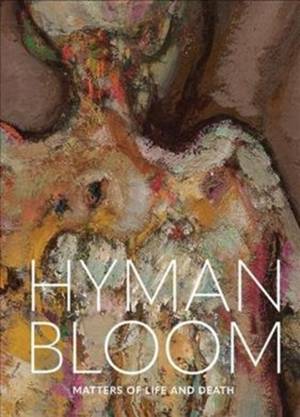
- Afhalen na 1 uur in een winkel met voorraad
- Gratis thuislevering in België vanaf € 30
- Ruim aanbod met 7 miljoen producten
- Afhalen na 1 uur in een winkel met voorraad
- Gratis thuislevering in België vanaf € 30
- Ruim aanbod met 7 miljoen producten
Omschrijving
Themes of mortality and spirituality in the long-neglected art of a midcentury American pioneer "Bloom's unsettling paintings are fueled by a sense of existence as a state of spiritual emergency and of art as a means for transfiguring fear." -Holland Cotter, Art in America
Hyman Bloom was a contemporary of Willem de Kooning, Jackson Pollock and Arshile Gorky. This new study focuses on Bloom's paintings and drawings of human corpses, anatomical studies and archeological excavations from the 1940s and 1950s. He often returned to these subjects throughout his career, using thickly applied paint in rich colors as he aspired to present both the physical and the spiritual on canvas.
Insightful curatorial essays accompanied by beautiful full-color reproductions explore this difficult but compelling work, considering themes such as the life, death and rebirth of Bloom's artistic reputation; the growing divide between figuration and abstraction at this defining moment of American art; earlier artistic traditions of representing mortality; the relationship between these works and Bloom's Judaism, interest in Eastern religions, and belief in reincarnation; and the artist's desire to find beauty and meaning within death and decay. In these drawings and paintings, as Bloom himself asserted, "the paradox of the harrowing and the beautiful [can] be brought into unity." Hyman Bloom (1913-2009) was born in Lithuania, now Latvia. He and his family immigrated to the United States in 1920, escaping anti-Semitic persecution. He lived and worked in the Boston area until his death. His work is held in many public collections, including the Museum of Modern Art, the Museum of Fine Arts, Boston, the Whitney Museum of American Art and others.Specificaties
Betrokkenen
- Auteur(s):
- Uitgeverij:
Inhoud
- Aantal bladzijden:
- 112
- Taal:
- Engels
Eigenschappen
- Productcode (EAN):
- 9780878468614
- Verschijningsdatum:
- 23/07/2019
- Uitvoering:
- Hardcover
- Formaat:
- Genaaid
- Afmetingen:
- 213 mm x 297 mm
- Gewicht:
- 816 g

Alleen bij Standaard Boekhandel
Beoordelingen
We publiceren alleen reviews die voldoen aan de voorwaarden voor reviews. Bekijk onze voorwaarden voor reviews.











